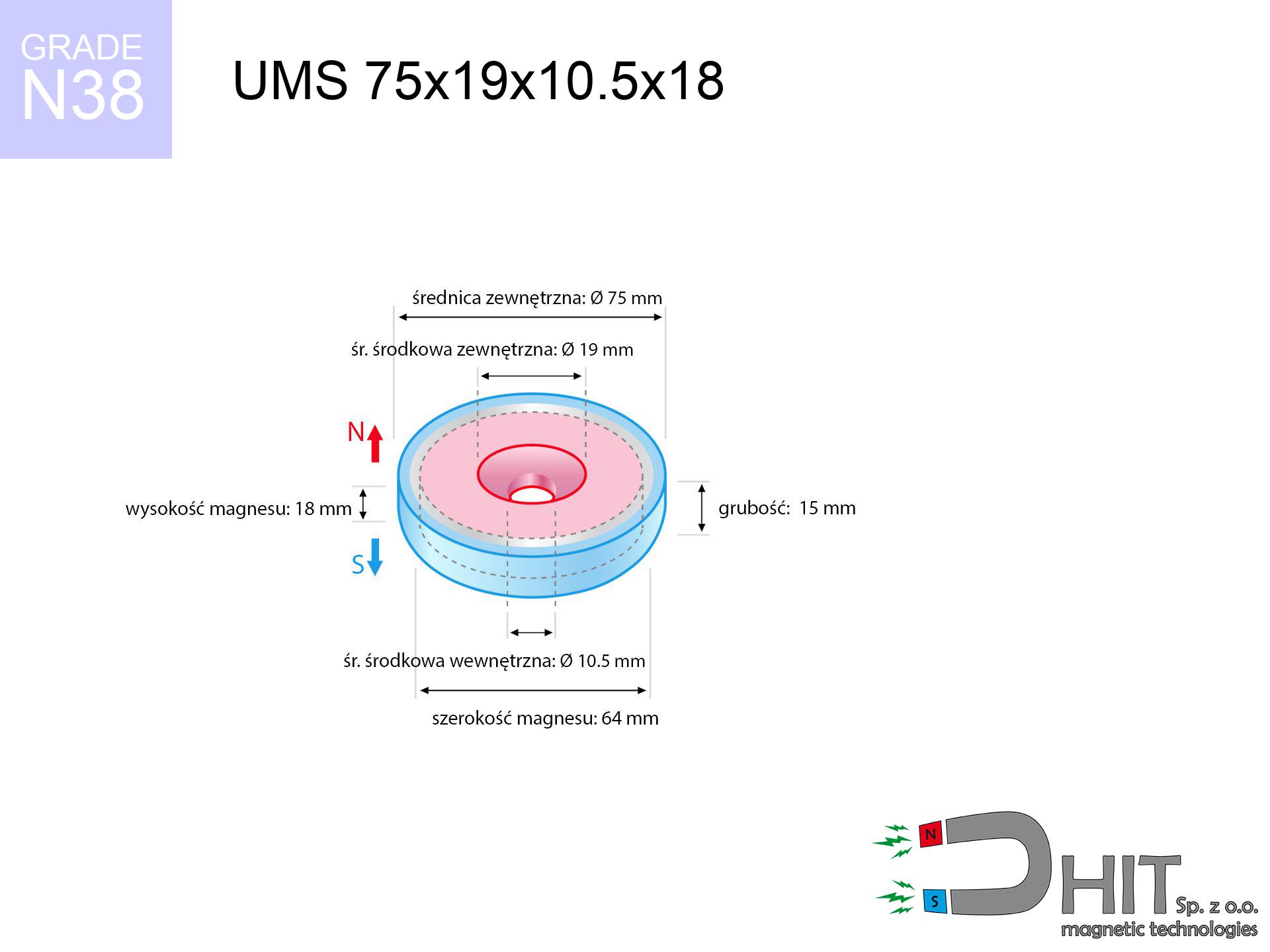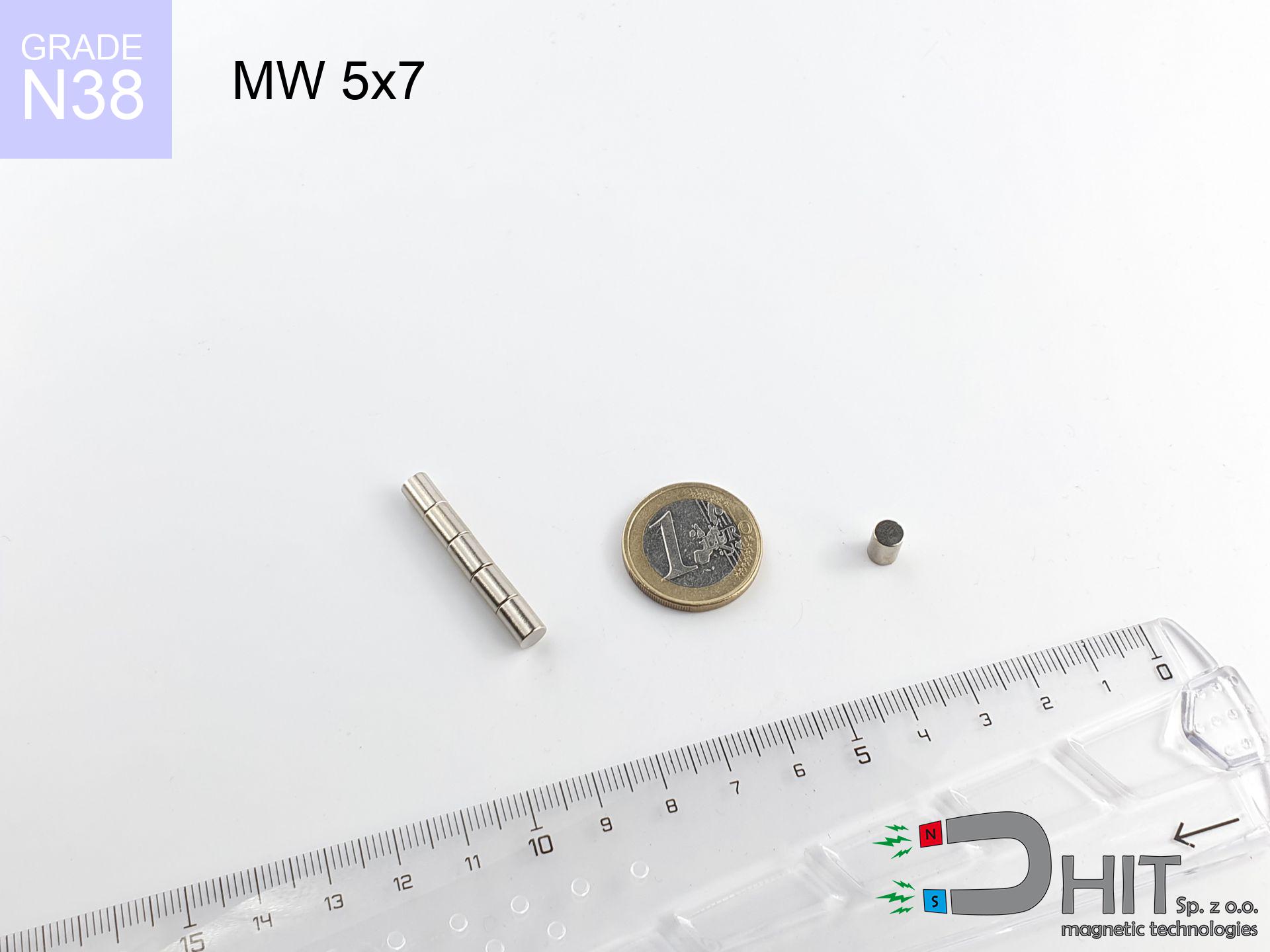UMGZ 75x34x18 [M10] GZ / N38
magnetic holder external thread
catalog number 190417
GTIN: 5906301813880
diameter Ø
75
mm [±0,1 mm]
height with thread
34
mm [±0,1 mm]
height
18
mm [±0,1 mm]
capacity ~
162.00 kg / 1588.68 N
max. temperature
≤ 80
°C
catalog number 190417
GTIN: 5906301813880
diameter Ø
75 mm [±0,1 mm]
height with thread
34 mm [±0,1 mm]
height
18 mm [±0,1 mm]
capacity ~
162.00 kg / 1588.68 N
max. temperature
≤ 80 °C
189.42 ZŁ gross price (including VAT) / pcs +
154.00 ZŁ net price + 23% VAT / pcs
bulk discounts:
need more quantity?Don't know what to choose?
Give us a call tel: +48 888 99 98 98 or get in touch via contact form on our website. You can check the power and the appearance of neodymium magnets in our magnetic mass calculator power calculator
Orders placed by 2:00 PM will be shipped on the same business day.
Specification: magnetic holder external thread 75x34x18 [M10] GZ / N38
Magnetic properties of the material N38
Physical properties of sintered neodymium magnets Nd2Fe14B
Compilation of suggested goods
Advantages as well as disadvantages of neodymium magnets NdFeB.
Apart from immense strength, neodymium magnets have the following advantages:
- They do not lose power over time - after 10 years, their power decreases by only ~1% (theoretically),
- They are exceptionally resistant to demagnetization caused by an external magnetic field,
- By applying a shiny coating of nickel, gold, or silver, the element gains an aesthetic appearance,
- They exhibit very high magnetic induction on the surface of the magnet,
- Thanks to their high temperature resistance, they can operate (depending on the form) even at temperatures up to 230°C and above...
- Due to the option of accurate forming and adaptation to individual needs – neodymium magnets can be produced in various forms and dimensions, which enhances their versatility in applications.
- Significant importance in the industry of new technologies – are utilized in hard drives, electric drive mechanisms, medical apparatus and various technologically advanced devices.
Disadvantages of neodymium magnets:
- They can break as they are extremely fragile when subjected to a strong impact. If the magnets are exposed to impacts, we recommend using magnets in a steel housing. The steel housing in the form of a holder protects the magnet from impacts and also increases its overall strength,
- Magnets lose their power due to exposure to high temperatures. In most cases, when the temperature exceeds 80°C, these magnets experience permanent loss in strength (although it is worth noting that this is dependent on the form and size of the magnet). To avoid this problem, we offer special magnets marked with the [AH] symbol, which exhibit high temperature resistance. They can operate even at temperatures as high as 230°C or more,
- They rust in a humid environment - during outdoor use, we recommend using waterproof magnets, such as those made of rubber or plastic,
- The use of a cover or a magnetic holder is recommended due to the limited possibilities of manufacturing threads or complex shapes in the magnet
- Potential hazard to health from tiny fragments of magnets pose a threat, if swallowed, which is crucial in the context of child safety. Furthermore, miniscule components of these magnets are able to complicate diagnosis after entering the body.
Be Cautious with Neodymium Magnets
Neodymium magnets can attract to each other, pinch the skin, and cause significant swellings.
In the situation of placing a finger in the path of a neodymium magnet, in that situation, a cut or a fracture may occur.
Neodymium magnets are the strongest magnets ever created, and their power can surprise you.
Familiarize yourself with our information to properly handle these magnets and avoid significant swellings to your body and prevent damage to the magnets.
Dust and powder from neodymium magnets are highly flammable.
Do not attempt to drill into neodymium magnets. Mechanical processing is also not recommended. If the magnet is crushed into fine powder or dust, it becomes highly flammable.
Neodymium magnets should not be in the vicinity youngest children.
Neodymium magnets are not toys. You cannot allow them to become toys for children. Small magnets pose a serious choking hazard or can attract to each other in the intestines. In such cases, the only solution is to undergo surgery to remove the magnets, and otherwise, it can even lead to death.
Neodymium magnets are not recommended for people with pacemakers.
Neodymium magnets generate strong magnetic fields. As a result, they interfere with the operation of a pacemaker. This is because many of these devices are equipped with a function that deactivates the device in a magnetic field.
If you have a nickel allergy, avoid contact with neodymium magnets.
Studies clearly indicate a small percentage of people who suffer from metal allergies such as nickel. An allergic reaction often manifests as skin redness and rash. If you have a nickel allergy, you can try wearing gloves or simply avoid direct contact with nickel-plated neodymium magnets.
Neodymium magnets can demagnetize at high temperatures.
Whilst Neodymium magnets can lose their magnetic properties at high temperatures, it's important to note that the extent of this effect can vary based on factors such as the magnet's material, shape, and intended application.
Do not place neodymium magnets near a computer HDD, TV, and wallet.
Neodymium magnets generate strong magnetic fields that can destroy magnetic media such as floppy disks, video tapes, HDDs, credit cards, magnetic ID cards, cassette tapes, or other devices. They can also damage videos, televisions, CRT computer monitors. Remember not to place neodymium magnets close to these electronic devices.
Keep neodymium magnets away from GPS and smartphones.
Neodymium magnets produce intense magnetic fields that interfere with magnetometers and compasses used in navigation, as well as internal compasses of smartphones and GPS devices.
Magnets made of neodymium are highly susceptible to damage, resulting in breaking.
In the event of a collision between two neodymium magnets, it can result in them getting chipped. Despite being made of metal as well as coated with a shiny nickel plating, they are not as hard as steel. In the case of a collision between two magnets, there can be a scattering of small sharp metal fragments in different directions. Protecting your eyes is essential.
In order to illustrate why neodymium magnets are so dangerous, read the article - How dangerous are very strong neodymium magnets?.

![UMGZ 75x34x18 [M10] GZ / N38 UMGZ 75x34x18 [M10] GZ / N38](https://cdn3.dhit.pl/graphics/products/umgw-75x34x18-m10-gz-xid.jpg)
![UMGZ 75x34x18 [M10] GZ / N38 UMGZ 75x34x18 [M10] GZ / N38](https://cdn3.dhit.pl/graphics/products/umgw-75x34x18-m10-gz-fos.jpg)


![through hole magnetic holder 25x7.7 [M5] / N38 ↑ axial through hole magnetic holder 25x7.7 [M5] / N38 ↑ axial](https://cdn3.dhit.pl/graphics/products/hh-25x7.7-m5-pov.jpg)


